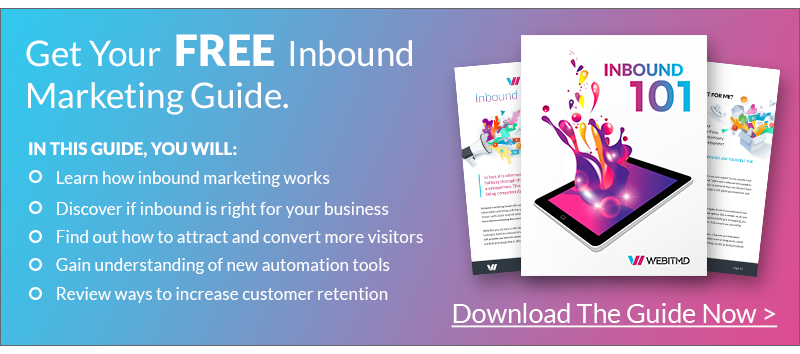You probably already have a solid SEO strategy in place. But while your site may be ranking high in the SERPs and attracting tons of visits, you might still be struggling to monetize this traffic and turn it into a meaningful source of revenue. This is where inbound marketing comes in.
Inbound marketing is designed to lead your visitors from the top of the sales funnel all the way down to the bottom, where they become paying customers. There are four main steps to this methodology which are:
- Attract
- Convert
- Close
- Delight
But what exactly does all this mean and how does it translate into more customers for your business? In this post, we’ll discuss four ways inbound marketing can help you complete the sales cycle.
1. It Brings the Right Visitors to Your Site
SEO is a huge piece of the puzzle when it comes to generating site traffic. However, there are many different ways to drive qualified traffic to your site and inbound marketing considers all of them. This includes paid advertising, content marketing, social media, and more. Inbound marketing takes all these tactics and combines them into one cohesive strategy that is used to attract high-quality visitors to your site that have a high chance of converting.
To put it simply, inbound marketing is about creating high-quality content that potential customers want to read and then distributing that content through the right channels to gain traction. If you can predict what problems or questions your ideal customers will face, it is much easier to get their attention and bring them to your site.
2. It Turns Them Into Leads
Again, this comes down to the content you are producing. Once you have successfully brought visitors to your site, what do you do with them? How do you hold their attention long to earn their trust and get their contact info?
Inbound marketing is not about selling a product as much as it is about educating and informing your potential customers. We must also consider that today’s buyers are completing over 50 percent of the buying process before they ever reach out to a salesperson. This means they are spending their time doing online research and talking with friends or colleagues to understand what their options are.
If you can provide these potential customers with the information they are looking for and create a clear conversion path on your website, you have a much higher chance of collecting their contact information and turning them into qualified leads for further marketing efforts
3. It Nurtures Your Leads Until They are Ready to Buy
After you have brought visitors to your site and gained their contact information, you can use marketing automation tools to nurture your contacts and lead them even further down the sales funnel. E-mail drip campaigns are a great way to deliver highly targeted content that caters to the needs of a specific contact in your database based on where they are in the buyer’s journey. Other tactics, such as personalization tokens or timely follow-ups can go a long way in holding interest and earning trust among potential customers. Furthermore, lead scoring – if done correctly – can tell you which contacts are ready to be contacted by a salesperson and which ones need to be nurtured so you don’t run the risk of coming on too strong.
4. It Aligns Your Sales and Marketing Teams
By the time your sales team reaches out to a contact, that contact should be ready and willing to make a purchase from your business. This is the only way to ensure your sales team is working as efficiently as possible and not wasting their time with unqualified leads. Inbound marketing works by educating prospects as much as possible before they reach the sales team. It also helps to properly identify when they are ready to be contacted so that you aren’t wasting time or ruining relationships with valuable prospects by following up too soon.
Inbound Marketing Transforms Page Views into Sales
Inbound marketing ultimately serves as a way to align your sales and marketing teams so that the entire sales process – from the time a visitor comes in contact with your brand to the time they become a customer – works as seamlessly as possible. If inbound isn’t a part of your digital marketing plan yet, it might be time to reevaluate your strategy.
Did You Find this Content Helpful?
If so we invite you to download our FREE guide below on inbound marketing. Have a read and see how your business model fits into this methodology. Got questions? Call us; we love to talk shop.



.jpg)




.jpg)



.jpg)





![5 Reports to Elevate Your HubSpot Sales Dashboard [+ Examples]](https://blog.webitmd.com/hs-fs/hubfs/Imported_Blog_Media/6-winning-examples-of-a-hubspot-sales-dashboard-2.png?width=767&name=6-winning-examples-of-a-hubspot-sales-dashboard-2.png)